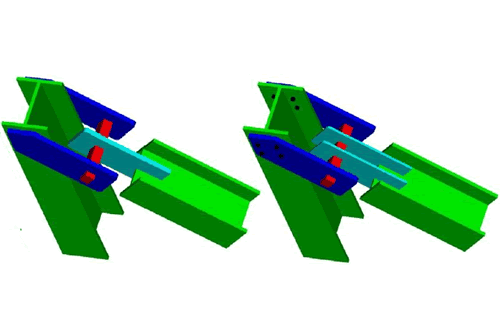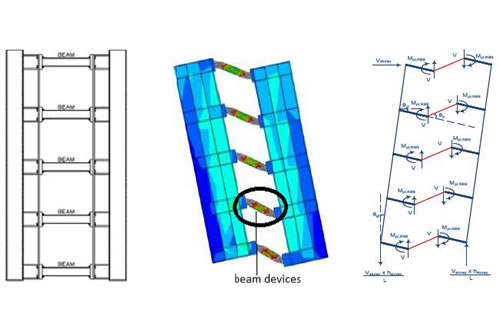Fully Dissipative and Easily Repairable Devices for Resilient Buildings with Composite Steel-Concrete Structures
Civil structures subjected to strong earthquakes need to dissipate large amounts of energy.
This energy dissipation is achieved through development of inelastic deformation in the so called "dissipative zones"
of structural members. This means that conventional systems suffer significant inelastic deformations in main structural
elements and residual storey drifts after a strong seismic event. Repair work in these cases is most of the time not feasible,
or too expensive.
Other consequent effect is the long interruption of functionality of the building, leading to additional costs and discomforts
for building owners and occupants. Reduction of damage of structural and non-structural elements after a disaster becomes a fundamental
aspect for improving the long-term sustainability and resource conservation. The resources spent in the reconstruction after a disaster
can be significantly reduced through innovative structural systems for new buildings and retrofit measures for existing buildings,
dropping environmental and economic costs in a life cycle perspective.
The interest on the development of dissipative devices in earthquake risk mitigation of civil structures has greatly increased.
The introduction of devices aims to dissipate the seismic energy through their plastic deformation, leaving main structural elements undamaged.
They must provide adequate characteristics of ductility and energy dissipation in order to absorb large strains due to concentration
of plasticity. Although the "dissipative" character of such innovative devices has been studied intensively in many research projects
all over the world, their reparability performance still remains uncertain. Since it is crucial to restore buildings and its functions
as quickly as possible after an earthquake, it is strongly advisable to develop structural systems that are simple to repair.
Anti-seismic devices previously designed and characterized within RFCS Projects by the partners involved in DISSIPABLE will
be further developed taking into account the experience collected so far. Optimized structural systems will be proposed,
with improved dissipation, reliability and reparability features. Single storey buildings with seismic resistance provided
by the improved devices will be built and subjected to strong earthquakes. Systematic post-earthquake repair and reassembly
procedures for these buildings applied and provided as "instructions for use". Ability of repaired systems to resist strong earthquakes
will be examined. Economic and environmental benefits and improved resiliency
properties of the proposed systems will be quantified.
This project has received funding from the Research Fund for Coal and Steel under grant agreement No 800699. The results presented within this site reflect only the authors' views. The European Commission is not responsible for any use that may be made of the information it contains.




